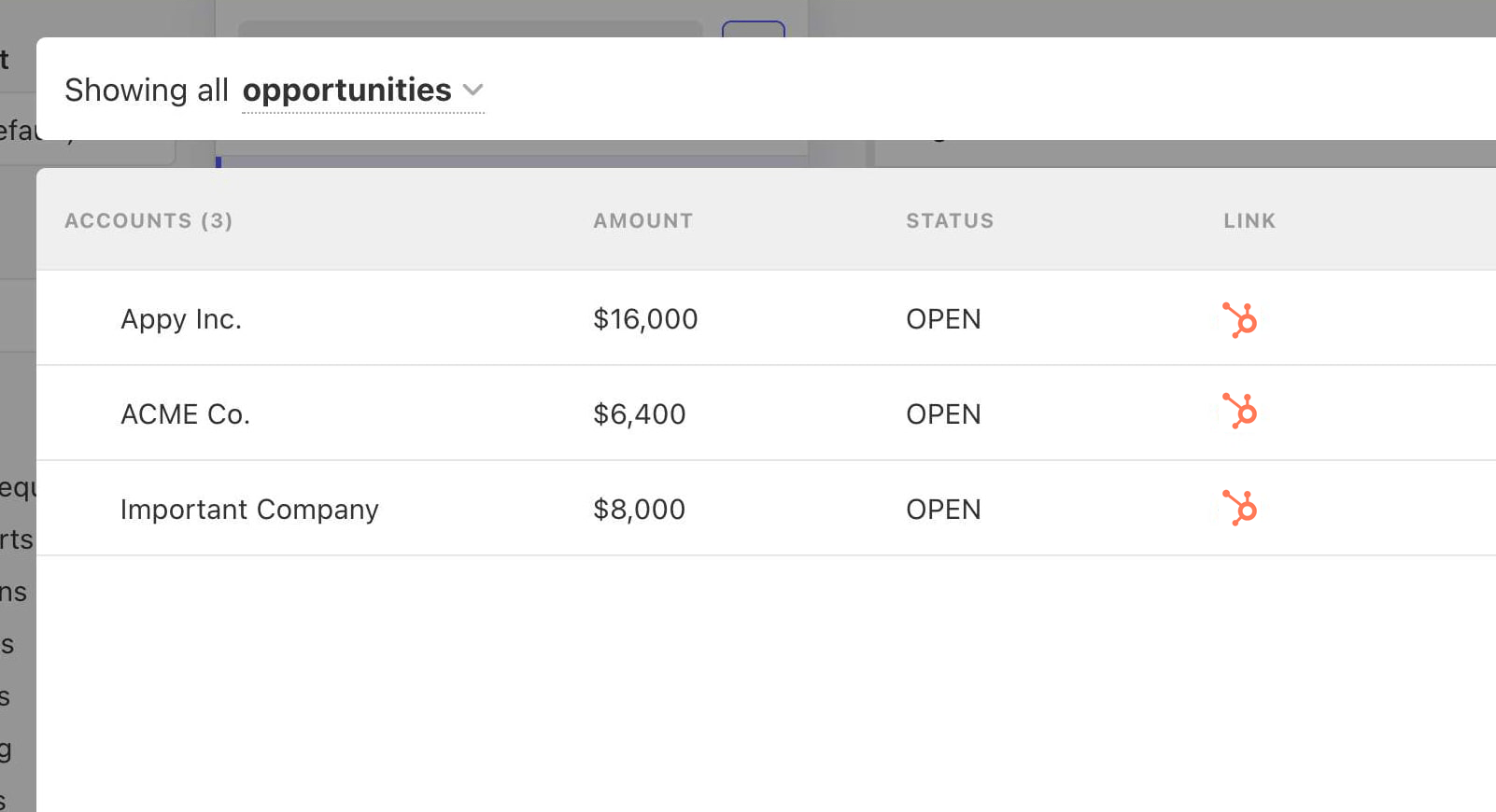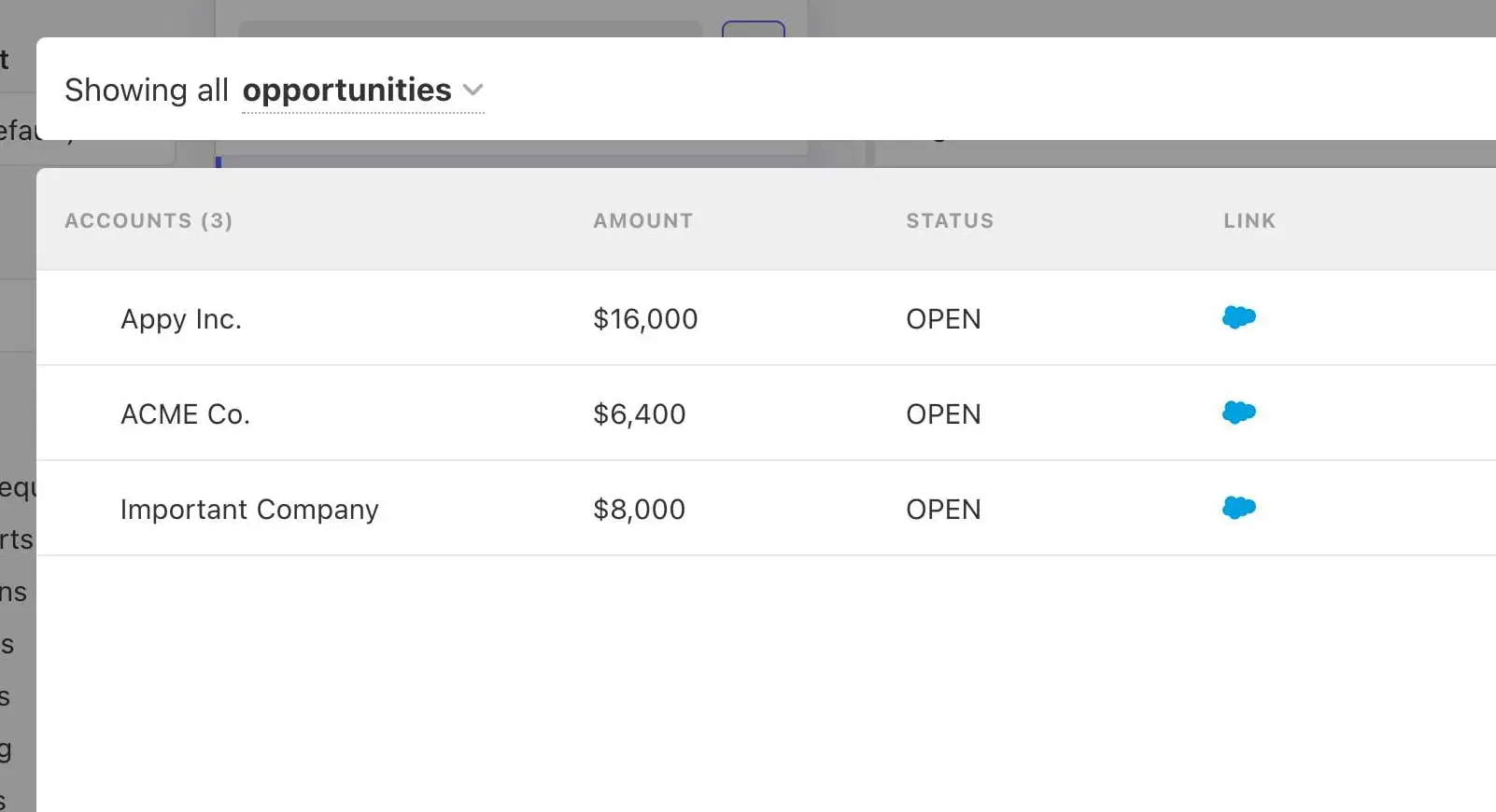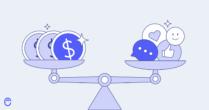When it comes to deciding what to build, prioritization is key. Especially in a volatile economic climate, you have to understand what projects to focus on. A big portion of the product manager’s job is already uncertain, so getting some clarity on what to build next is super helpful.
It may seem like input from the sales team is just a “nice to have”. But this article will explain why it’s an absolute must. Keep reading to find out how insights from the sales team can make a huge difference in your product prioritization efforts.
What is product prioritization?
In product management or engineering, product prioritization refers to deciding what products, features, or initiatives to develop first. A prioritization decision considers customer needs, business goals, and team constraints to determine what projects to prioritize.
Without a good system, you could end up building something that won’t really help your business.
“Bad prioritization is an excellent way to kill your startup.”
Lenny Rachitsky, Product Lead at Airbnb
You could base the decision about what to build next based on many things:
- Industry trends
- What the competitors are doing
- What you want to build
But what’s actually “good prioritization”? Here are a few prioritization factors we recommend:
- User feedback
- Effort/time
- Impact on the revenue
- Associated deal value
- Strategic value
- Supporting product vision
- Urgency
You need to consider all of these factors and decide how much each of them matters to your business.
There are also prioritization frameworks, models, and formulas.
You can select a different method for each team or project. We’ll introduce some of them later in the article, so keep reading!
Roadblocks
Product prioritization is easier said than done. It’s often a balancing act between taking risks and playing it safe. You may want to create something bold and out of the box. But you need to also consider what your users are actually asking for. And there are necessary improvements (like security and compliance projects).
There are other roadblocks to product prioritization.
Limited resources
Let’s be honest: everyone has limited resources. So it’s all about optimizing them.
Hiring more people, taking on more projects or buying more tools isn’t always the answer. Sometimes, less is more. So you need to figure out how to do more with what you have.
Engineers’ time is pretty expensive. It also adds up fast. So you need to use that particular resource carefully.
“Startups should focus on the “pain-killer” features which will bring the “AHA moment” closer and increase usage metrics.”
Lisa Dziuba, Head of Product Marketing at LottieFiles
Too little or too much data
It’s very important to gather enough data to make an informed decision. Data can come in many forms: user feedback, industry trends, product usage data, and more. So make sure that you’re consistently researching and collecting feedback from your users and even prospects.
Too much data can also become overwhelming. This is where idea management comes into play. In basic terms, idea management is a way to organize and make sense of all the ideas from all sources, including feedback.
A tool like Canny makes it easy: you can invite users to add ideas, vote on existing feedback, and have a conversation with them. You can also add tags and categories to sort the feedback even better.

Potential bias
It’s hard not to fall in love with your own idea. We’ve all been there. Sometimes, you can get so fixated on a certain idea that you lose sight of everything else.
While it’s impossible to remove bias completely, acknowledging that you have it is already helpful. Before you move forward with any project, stop and ask yourself: “Am I married to this idea? Or am I honestly unattached and focused on what’s best for my product and my customers?”
Misalignment in strategy
Different departments have different goals and priorities. That’s common and totally fine. When those goals don’t align – that’s when this becomes a problem.
Sales might be after more leads.
Customer success – higher NPS scores.
Customer support – less churn.
Design – better UX/UI.
Growth – higher retention.
In this case, it’s pretty difficult to figure out what to build next. One project can’t satisfy all of these requirements.
If you find yourself like this, go back to the drawing board. Understand what your biggest priorities are. From there, pick the projects that will have the highest impact on the mutual goals you’re going after.
“A big complaint from sales teams within many tech organizations is that the product team works in a silo when building and prioritizing what to focus on.
Steve Sutherland
Product prioritization is key to getting everyone aligned and moving forwards in the right direction.”
Models/frameworks
Let’s go over some prioritization models and frameworks to help you with goal alignment.
Please note: this is not a comprehensive guide and just an outline of some of the most popular methods. But no framework is universal and perfect. So explore each of them and experiment. This is the best way of finding one that will work best for you. Check out this blog post for a bigger list of prioritization frameworks.
RICE
The RICE model uses four main factors to rate any project or idea:
- Reach – how many people will this affect?
- Impact – how important is this feature to your customers? (low, medium, or high)
- Confidence – how sure are you that your reach and impact estimates are correct? (%)
- Effort – how many people need to be involved? How many days, weeks, or months will this take?

After you’ve estimated all of these numbers, you can calculate the score using this formula.
RICE = (Reach x Impact x Confidence) / Effort
Impact–Effort Matrix
Aka effort-impact or 2×2 matrix. This matrix shows how the value (impact) of a feature relates to the complexity of development (effort). Here’s how it works.
- Product manager starts with a hypothesis and outlines all the required features
- The team that will work on this project (product, engineering, design, etc) votes on where to place each feature on the impact and effort dimensions
Every feature ends up in one of the four quadrants:
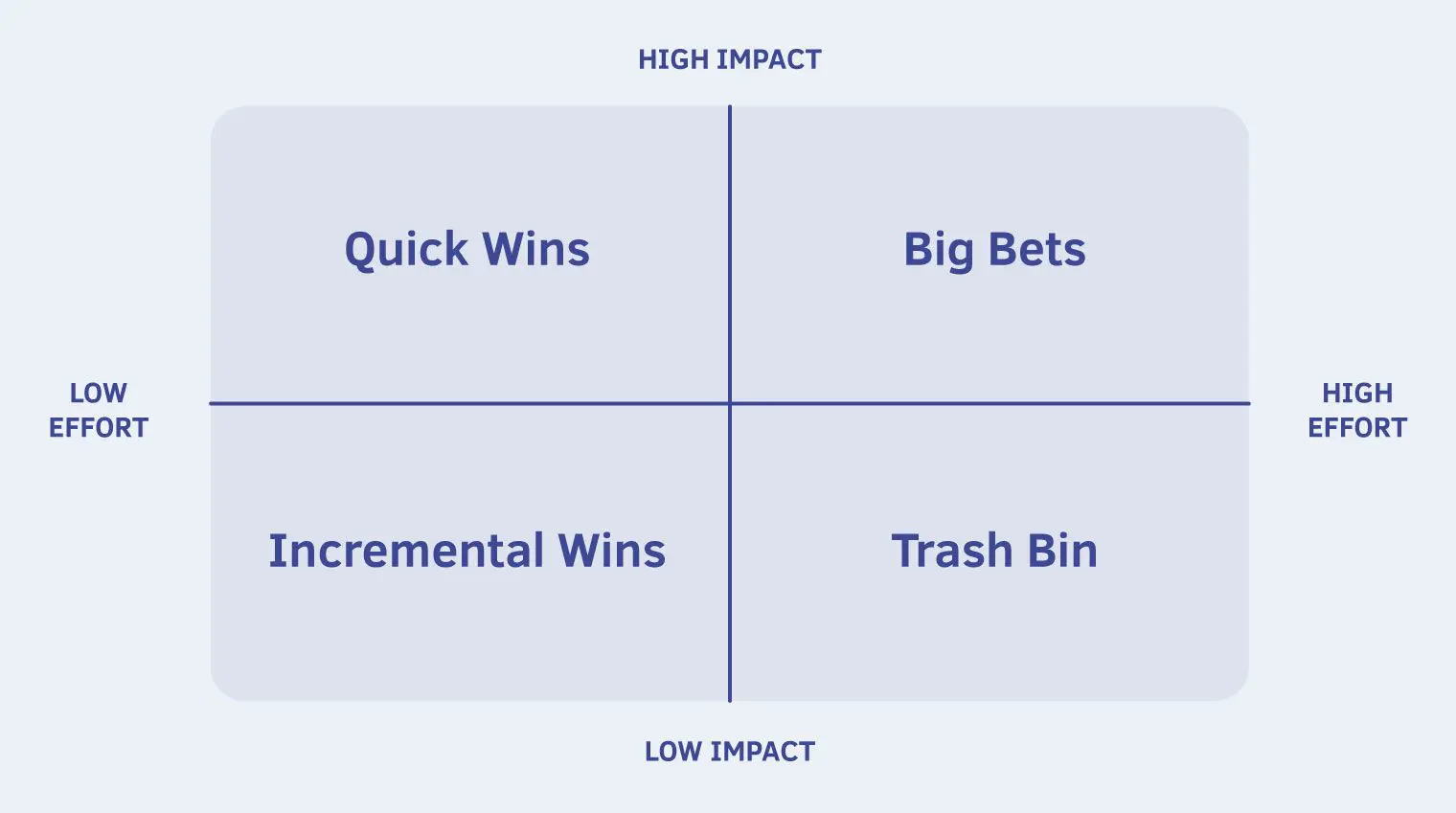
- Quick wins – low effort and high impact
- Big bets – high effort and high impact
- Fill-ins – low effort and low impact
- Money pits – high effort and low impact
This approach works great for projects with only a few features. Otherwise, it can get pretty confusing.
Feasibility, Desirability, and Viability scorecard
Using this method, you score each feature from 1 to 10 and try to assess whether it’s feasible, desirable and viable. Here’s what it all means:
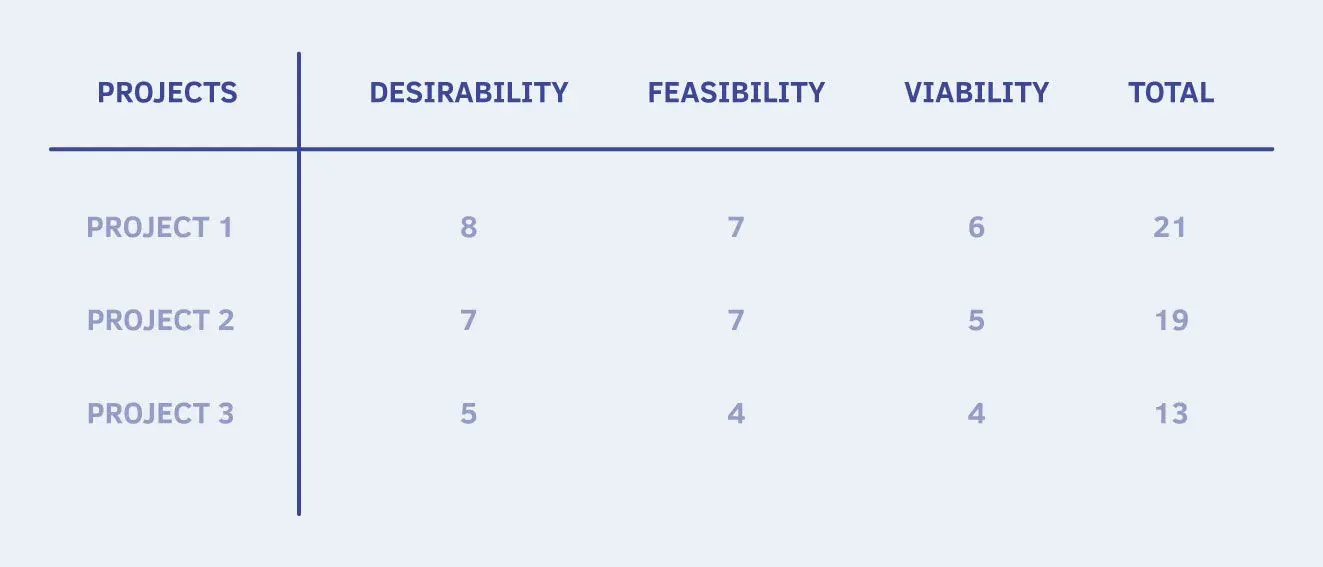
- Feasibility – do we have enough resources, skills, time, tools, storage, people, etc to build this?
- Desirability – do our users really want this feature? Does it solve their problem? Viability – will our users pay for the feature? Will it bring significant ROI?
Weighted Score
We find this method very straightforward and easy to use. Our own scoring system in Canny uses the weighted score method.
We add these factors to our prioritization formula in Canny. It then scores ideas for us and tells us what the biggest priority should be. From there, it’s easy to add the winning ideas to the roadmap and get to work.
Note — the screenshot above shows Canny’s roadmap prioritization software in action. Try it free today.
MoSCoW analysis
This framework is great because it’s also fairly simple. The idea is to use plain language and categorize all ideas into:
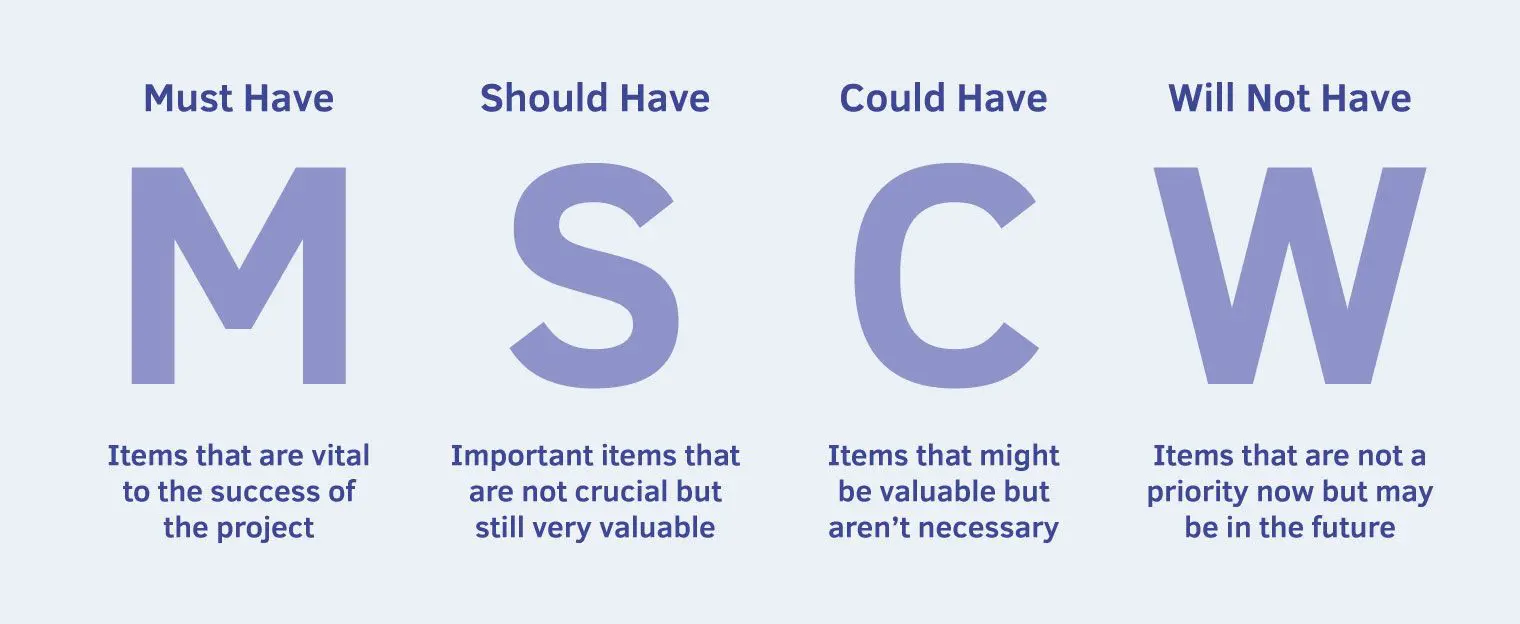
- Must have – features that make or break your product
- Should have – important but not vital features
- Could have – nice to have ideas
- Will not have – think back to the money pit examples from the Impact-Effort matrix
Cost of Delay
When you’re working on a potentially very time-sensitive feature, use this method. It’s the only one that focuses primarily on the monetary impact on your business. Here’s the formula and how to use it:

- Estimate revenue per unit of time (how much additional revenue can you expect every month if you had that feature)
- Estimate time it will take to develop the feature
- Divide the estimated revenue by the estimated time = cost of delay
Keep in mind: estimating monetary value is effective, but also subjective. So try to avoid making very bold statements and arguing over this.
Where the sales team comes in
Product leaders are used to involving and bringing together lots of teams: design, engineering, project management, etc. The sales team often ends up separated and working in silos. Here’s what happens next:
- Product managers collaborate only with teams who’ll ultimately build the features
- They prioritize projects and pick the winning ideas
- They assign tasks to engineering, design and other teams
- Sales reps are passing on feature requests from prospects
- These features don’t align with the overall product strategy
- Product managers don’t incorporate that feedback and stick with their priorities
- Sales lose deals, growth and new business slows
How do you fix this?
Involve the sales team in the conversation early on. Especially if you chose a scoring method that emphasizes collaboration, invite the sales team right away. Just like customer support and success can provide invaluable insights into your users’ experiences, needs and pain points, the sales team can do the same, only with prospects.
Here’s Alice, our head of growth, and her take on sales and product prioritization.
Prashanth Shankara agrees with Alice.
“Sales often has the best view of a customer’s long-term vision and need. They also bring valuable insights into how the product plays into winning or losing deals. These are necessary to inform product teams of where to prioritize.”
Prashanth S Shankara, Senior Manager of Product Marketing at Tonkean
To make this efficient, you need a feature request system. You’re probably already compiling user feedback somewhere. It could be a spreadsheet, an idea board, or a powerful product management tool. Regardless – ask the sales team to add feedback from the prospects there. Those ideas are usually around:
- Missing deal-breaker features
- Insights about competition and industry
- Budget constraints
You can use all that information while prioritizing what to build next. Especially if sales reps can assign a monetary value to each idea. For example, they can calculate how much revenue they lost due to one particular missing feature. This will give you a clear indicator of this feature’s importance.
“Sales are a key contributor because they provide the buyers’ perspective and help validate that what you’re prioritizing is what end customers want.
Instead of the term silo, I believe product teams should work more in a greenhouse approach. Sales teams should always have visibility of what’s going on inside as the product grows and the product team needs to see that there’s interest when looking out through the glass.”
Steve Sutherland
How sales can help with product prioritization
Your sales team can help you build features that will have the greatest impact on your business. So try to help them with this.
You can review sales transcripts and call recordings to uncover some insights from prospects. As a product manager, you might understand their pain points better and might see a low-hanging fruit-type solution quicker.
“Sales brings in the voice of the prospect. They can tell product marketing managers and product managers what features they are being asked the most about. They also notice gaps in the product that influence enhancements or completely new features.”
Airon White, Manager of Product Marketing at BigCommerce
Equip your sales team with an easy way to share that feedback from prospects. After all, you’re the one who needs it.
Many tools have CRM integrations that make sharing that feedback seamless. So, instead of interrupting their workflow and giving them additional tasks, you can automate that feedback collection and make life easy for everyone.
Canny integrates with Hubspot and Salesforce for this exact reason. Our own and many other sales teams submit feedback from prospects from their favorite sales tool directly to Canny.
It works both ways too. Let’s say that a sales rep submitted a feature request from a prospect. After some time, the feature got built and is now available. Now it’s time for the sales team to follow up with that prospect and try to re-engage them. After all, the feature they specifically requested is now live!
Canny automates that follow-up process and helps both the product and the sales team.
Prioritize better through collaboration with sales
Product management is all about collaboration. And one of the main tasks is selecting which features and updates to prioritize.
Your own sales team can be a great help! They have a unique channel of communication with your potential customers. And, because they haven’t bought yet, they’re much more critical of your product. This could serve you very well and boost your future growth.
So start taking advantage of this opportunity today! Involve your sales team in product prioritization early on and improve internal communication. You’ll end up building better products in the meantime.




